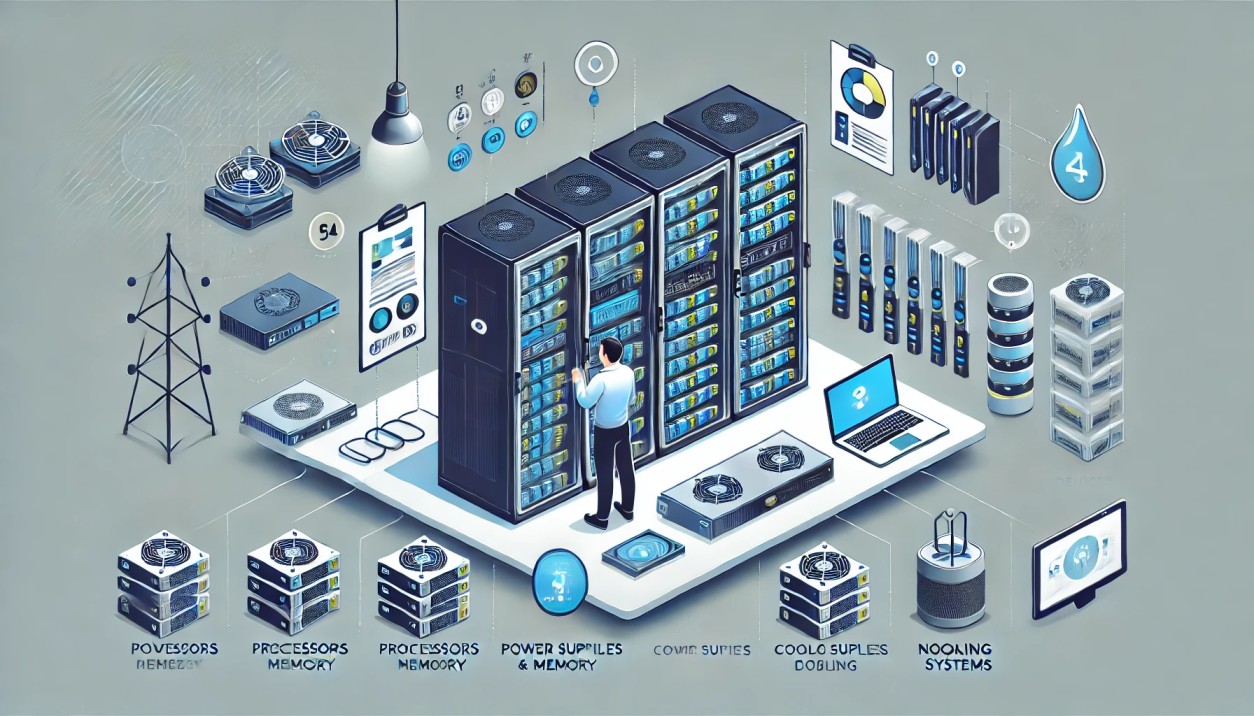Selecting the right server supply is crucial for ensuring optimal performance, scalability, and reliability of your IT infrastructure. This guide provides an in-depth look at key considerations and best practices for server supply, helping you make informed decisions for your organization’s needs.
Understanding Server Supply Basics
Server supply refers to the procurement and management of server hardware and related components essential for running data centers, enterprises, and cloud services. Key elements include processors, memory, storage, power supplies, and cooling systems. Understanding these components and how they interact is vital for building a robust and efficient server infrastructure. Factors such as performance requirements, workload types, and future scalability needs must be considered when planning your server supply strategy.
Assessing Your Server Needs
Before purchasing server supplies, it’s crucial to assess your organization’s specific needs. Consider factors like the types of applications you run, expected workloads, and future growth projections. Determine whether you need high-performance servers for demanding applications or more cost-effective solutions for basic tasks. Conducting a thorough needs assessment ensures that you invest in the right server hardware, avoiding over-provisioning or under-provisioning, both of which can lead to inefficiencies and increased costs.
Choosing the Right Server Types
Servers come in various types, each suited to different applications and environments. The main categories include rack servers, tower servers, blade servers, and hyper-converged infrastructure (HCI). Rack servers are ideal for data centers with high-density requirements, while tower servers are suitable for smaller setups or remote offices. Blade servers offer scalability and space efficiency, and HCI integrates computing, storage, and networking into a single system. Understanding the pros and cons of each type helps you choose the best fit for your needs.
Selecting Processors and Memory
Processors (CPUs) and memory (RAM) are critical components that determine a server’s performance. When selecting processors, consider factors such as core count, clock speed, and cache size. For memory, ensure you have sufficient capacity and speed to handle your workloads. ECC (Error-Correcting Code) memory is recommended for its ability to detect and correct data corruption. Balancing CPU and memory capabilities ensures your servers can handle current and future demands efficiently.
Storage Solutions and Considerations
Choosing the right storage solutions is essential for data management and performance. Options include HDDs (Hard Disk Drives), SSDs (Solid State Drives), and NVMe (Non-Volatile Memory Express) drives. SSDs and NVMe drives offer faster data access speeds and are ideal for high-performance applications, while HDDs provide cost-effective bulk storage. Consider implementing RAID (Redundant Array of Independent Disks) for data redundancy and reliability. Evaluating your storage needs based on performance, capacity, and budget ensures an optimal setup.
Power Supply and Efficiency
A reliable and efficient power supply is crucial for server uptime and energy efficiency. Choose power supplies with high efficiency ratings, such as 80 PLUS certified units, which reduce energy consumption and heat output. Redundant power supplies provide failover protection, ensuring servers remain operational in case of a power unit failure. Monitoring and managing power usage through intelligent power distribution units (PDUs) can further enhance efficiency and reduce operational costs.
Cooling and Thermal Management
Effective cooling and thermal management are essential for maintaining server performance and longevity. Servers generate significant heat, which must be dissipated to prevent overheating and hardware damage. Implementing proper airflow management, such as using hot and cold aisles, helps maintain optimal temperatures. Consider liquid cooling solutions for high-density environments or when air cooling is insufficient. Regularly monitor temperatures and ensure cooling systems are maintained for consistent performance.
Networking Components and Connectivity
Networking components are vital for server communication and data transfer. Key elements include network interface cards (NICs), switches, and cables. Ensure your servers have adequate NICs to handle network traffic and redundancy. High-speed switches and quality cabling (such as Cat6 or fiber optics) support faster data transfer and reduce latency. Implementing proper network segmentation and security measures protects data and improves overall network performance.
Scalability and Future-Proofing
Planning for scalability ensures your server infrastructure can grow with your organization’s needs. Choose modular and upgradable components, such as scalable processors and memory modules, to accommodate future expansion. Implement virtualization and containerization technologies to optimize resource utilization and flexibility. Regularly review and update your server supply strategy to adapt to changing technology trends and business requirements, ensuring long-term viability and performance.
Vendor Selection and Procurement
Selecting the right vendors is crucial for obtaining high-quality server supplies and reliable support. Evaluate vendors based on their reputation, product quality, pricing, and customer service. Consider partnerships with major server manufacturers, such as Dell, HP, and Lenovo, for comprehensive solutions and support. Establish clear procurement processes, including RFPs (Request for Proposals) and SLAs (Service Level Agreements), to ensure transparency and accountability in vendor relationships.
Implementing Best Practices for Server Maintenance
Regular maintenance is essential for server reliability and performance. Develop and implement a comprehensive maintenance plan that includes hardware inspections, firmware updates, and performance monitoring. Establish backup and disaster recovery protocols to protect data and ensure business continuity. Train IT staff on best practices for server management and troubleshooting, and regularly review and update maintenance procedures to address evolving needs and challenges.
Conclusion and Future Trends in Server Supply
The server supply landscape is constantly evolving, driven by advancements in technology and changing business needs. Stay informed about emerging trends, such as edge computing, AI-driven infrastructure management, and green IT initiatives, to leverage new opportunities and maintain a competitive edge. By understanding key considerations and implementing best practices, you can build and maintain a robust, efficient, and scalable server infrastructure that meets your organization’s current and future demands.

